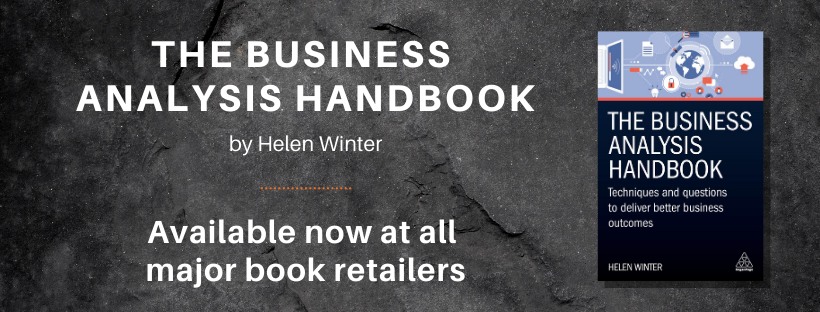
Common problems
- The need for business analysis is not recognised
- The business is accustomed to going straight to the solution and speaking directly with developers.
- There are no clear job descriptions and roles for business analysts
- There are no senior representatives supporting the use of business analysis and promoting it
- Lack of Business Analysis capability
- No set training or qualification measures
- Competencies are not measured
- Team structure does not support the levels required e.g. mixture of management, leads, senior, normal and junior Business Analysts
- Lack of strategic direction for business analysis and no defined role boundaries
- Lack of tools and standards
- No common methodology
- No formal templates
- No common tool sets
Gaining recognition and promoting business analysis
- Do marketing. This means defining the BA services being offered and the value added services. Getting the message out there can involve having an intranet page, running a drop in session inviting the business areas that may use the service to visit to see the type of work and benefits that can be offered to them, presentations and promoting good new stories of how value was added as a result of business analysis. The value of business analysis article and the Business analysis involvement through the project lifecycle article provide more information on the value and services offered.
- Do collaboration. Establish relationships with the teams that a Business Analyst will work alongside including project managers, developers and testers. Boundaries must also be established between the different roles. One method for establishing these could be to set up a delivery framework group to meet on a regular basis to ensure continual improvement and having clearly defined job descriptions and roles.
- Set up strategic capability. For example having business architects and business analysis involvement early on in the project lifecycle will increase the prominence of business analysis and allow their work to be planned at the early stages of the project and help shape it.

Improving Business Analysis capability
- The operating model needs to support the following:
- Management team and Lead Business analysts
- Senior Business analysts
- Business analysts
- Trainee Business analysts
- Define a delivery framework which sets out the project approach / estimation / planning of resources and deliverables. This shows why lead business analysts and senior business analysts are required because they would be needed to develop and support this.
- Establish a training budget which can be used to improve the Business analyst’s techniques, set a standard and ensure consistency. An aim could be for BAs to attain the BCS international Diploma.
- Set up a mentoring scheme where the more experienced BAs can tutor the less experienced and there is someone that can be seen for advice.
- Set up a shared internal area dedicated to business analysis where knowledge can be shared.
- Establish a regular BA forum to discuss and share ideas.
- Introduce peer reviews to ensure quality and a consistent standard.
- Have competency assessments to understand the areas that need to be improved. One option could be to assess against the SFIA (Skills Framework for the Information Age).This is globally recognised and assesses skill sets and levels. It will not only ensure focus on the right training courses but will also aid the writing of role profiles and job descriptions. Also see the link to A guide to self-evaluation of Business Analysis skills for a list of BA skills and to act as a template for assessment and self-assessment to aid discussions in professional development.
Introducing tools and standards
- Determine what project methodology should be followed as a standard and who has the authority to change this approach if there is a circumstance where it may be appropriate to change it for a particular project. See the article How to identify the most appropriate methodology for a project for guidance on the choices of methodologies and considerations for appropriateness.
- Define the standard deliverables and services the business analyst team are going to provide. See the business analysis deliverables article for a list of what these could be.
- Introducing guidelines and standard templates of business analysis deliverables will ensure consistency, quality and key information captured. See the article What to include in a Business Requirements Document (BRD) for an example of BRD content headings. Providing templates will also provide the opportunity to let other business areas know what to expect and help sell the value that business analysts can bring.
- Capture and build up a Non Functional Requirement repository to enable a comprehensive list to be built up and re-used. See the article Gathering Non Functional requirements and who to involve for a list of categories as a starting point.
Thoughts? Questions? Please share in the comments.
If you have found this article useful then you might like my book – The Business Analysis Handbook – Techniques and Questions for better Business Outcomes. The book is available from www.koganpage.com and all major print and e-book retailers.

